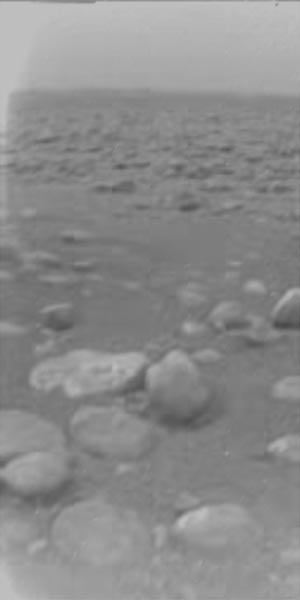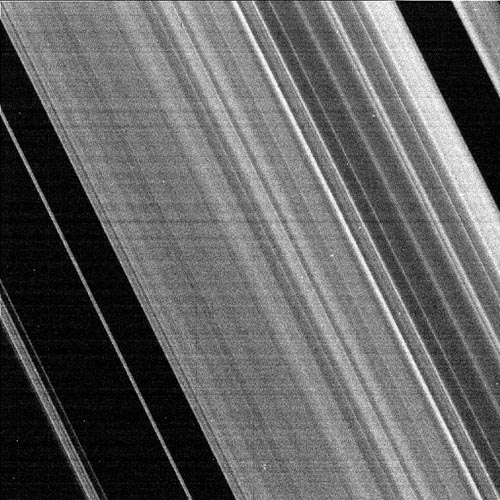| The mission to Titan, largest of Saturn's moons, was a triumph — showing how European cooperation can flourish when the European Union is not in charge... |
Cassini-Huygens: a Titanic achievement
WORKERS, MAR 2005 ISSUE
The successful landing on 14 January of the Cassini-Huygens probe on Saturn's moon Titan marks the climax of an epic journey begun long ago and is a fine example of how productive international cooperation, driven by science rather than politics, can be.
Three space agencies were involved from the outset. The Cassini orbiter (named after the Italian astronomer who discovered the gap separating Saturn's rings) was built by NASA's Jet Propulsion Laboratory, the communication antenna by ASI (the Italian space agency) and the Huygens probe by ESA, the European Space Agency — an independent inter-governmental body, not run by the EU.
Of one thing we can be sure. Had it been the EU and not the ESA involved, the thing would never have got off the ground. The money would certainly have been spent, countless politicians would have been fattened, but it is doubtful whether there would even be agreement on what colour to paint it.
As it is, 250 scientists worldwide are involved in the analysis of the data collected, with 17 nations contributing to some aspect of the mission.
The Cassini mission began in earnest in 1982, when a joint European and American scientific team proposed a detailed investigation of this remote outpost of the solar system. Fifteen years later, the giant Titan/Centaur rocket lifted off from Cape Canaveral to begin a seven-year voyage to Saturn.
Photos:
European Space AgencyInternational effort: the Cassini-Huygens probe showed what scientists can achieve by cooperation. Left: one of the first, stunning images from Titan's surface; centre, preparing the spacecraft; right, a fresh view of Saturn's rings.
Questions
Previous observation of Saturn and its satellites posed a number of questions which excited the curiosity of scientists, such as why Saturn produces 87% more heat than it absorbs from the Sun. Then there is the mystery of Saturn's rings, and why they differ in colour?
Other questions raised include why the moon Enceladus has such an abnormally smooth surface, and the origin of the dark organic material covering one side of the moon Iapetus.
Chemical reactions in the atmosphere of Titan, the largest of Saturn's moons have also excited interest, as has the source of Titan's abundant methane, a compound associated with biological activity on Earth.
In seeking an answer to these and other questions, it was clear that detailed international cooperation would be the way forward because no one nation possessed a monopoly on the expertise required.
The Cassini orbiter carries 12 instruments, performing a range of data collection tasks, and on the Huygens probe itself six different instruments measured the physical, chemical and electrical properties of Titan and its atmosphere. A different international team, spearheaded by university departments in France, Germany, America and our own Open University, developed each instrument.
Such an extensive payload makes Cassini-Huygens, at 5.6 tonnes, the largest interplanetary spacecraft ever built. An immediate problem for the team was the lack of a launch vehicle powerful enough to propel the craft directly to Saturn. This hurdle was overcome with a technique known as gravity assist (or fly-by), a manoeuvre that takes advantage of the mutual gravitational attraction between a planet and a moving spacecraft. Essentially the spacecraft gets a boost as it orbits a planet.
To launch a huge assortment of metal, fuel and sophisticated and delicate equipment into the air in October 1997, and have it land on target and talking to us 7 years later is a stunning achievement. It is testament to the capacity of science to surmount challenges, and the power of genuine collaboration.
The news of this triumph is particularly timely given the hand wringing which passes for governmental responses to pressing matters of the day. Forces beyond our control accompanied by a shrugging of the shoulders is the stock reply to demands that we make the world a better place. Science of course, cannot of itself achieve anything. It is a tool. But momentous achievements can help to remind us that we are not helpless.
When the Dutch astronomer Huygens discovered Titan in 1665, the world was astonished that science could enable us to see so far. We marvel again that 350 years later not only can we see Titan, we can reach out and touch it.


